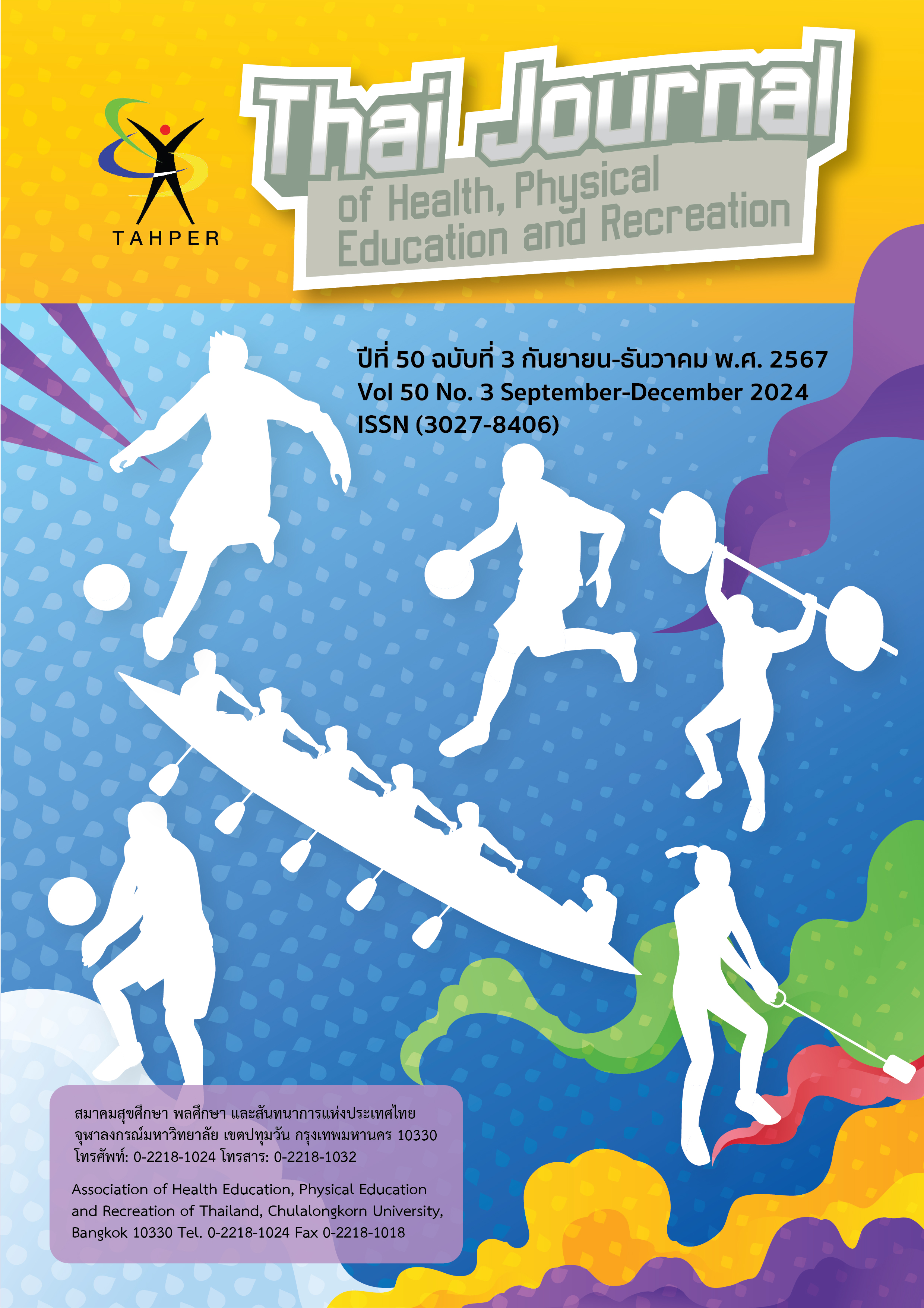Sport Tourism for Kolek Boat
Main Article Content
Abstract
Based on historical evidence, it is presumed that the Kolek Boat originated in the lower southern region of Thailand. The Muslim community in the South, known for their exceptional maritime skills, traditionally engaged in fishing. Consequently, they developed tools for seafaring, leading to the creation of the Kolek Boat. The boat's colorful designs are influenced by the art of four ethnic groups: Thai Buddhists, Thai Muslims, Javanese, and Chinese. These patterns reflect creative expressions shaped by the multicultural environment, social characteristics, and local lifestyles. This unique art form is a valuable cultural innovation that deserves preservation. The traditional long boat race in Narathiwat Province involves modifying the Kolek Boat, originally used for local fishing, into long racing boats. This tradition fosters unity, showcases local culture, and provides lively entertainment. It also offers economic benefits through sports tourism, attracting locals and tourists alike. The increased interest in Kolek Boat racing has the potential to enhance economic growth and expand the event into a national competition held annually. Additionally, it supports the promotion of sports tourism, generating income for local communities through activities, prize giveaways, and the sale of various products. This contributes to the preservation of local cultural traditions and the sustainable management of natural resources.
Article Details

This work is licensed under a Creative Commons Attribution-NonCommercial-NoDerivatives 4.0 International License.
Critical thinking in journals is the right of the author. The Association of Health Education, Physical Education and Recreation of Thailand is not always required, to create diversity in ideas and creativity.
ความคิด ข้อวิพากษ์ในวารสารเป้นสิทธิของผู้เขียน สมาคมสุขศึกษา พลศึกษา และสันทนาการแห่งประเทศไทยไม่จำเป็นต้องเห็นชอบด้วยเสมอไป เพื่อให้เกิดความหลากหลายในความคิดและความสร้างสรรค์
References
เจริญ กระบวนรัตน์. (2561). วิทยาศาสตร์การฝึกสอนกีฬา. (พิมพ์ครั้งที่ 2). กรุงเทพฯ: สินธนาก๊อปปี้เซ็นเตอร์.
เถกิงพล ขํายัง. (2556). การศึกษาเพื่อการสร้างสรรค์วิถีชีวิตชาวประมงมลายู: เรือกอและ. ปริญญาศิลปศาสตร์มหาบัณฑิต สาขาศิลปะการมองเห็น: ศิลปะสมัยใหม่, มหาวิทยาลัยศรีนครินทรวิโรฒ.
บุนรดา ปัญญารักษ์ และรักษ์พงศ์ วงศาโรจน์. (2561). ภาพลักษณ์ความปลอดภัยและการรับรู้การจัดการความปลอดภัยของนักท่องเที่ยวอิสระชาวจีนในกรุงเทพมหานคร. วารสารรัฐศาสตร์ปริทรรศน์ มหาวิทยาลัยเกษตรศาสตร์, 5(2), 126-150.
วุฒิ วัฒนสิน. (2542). ลวดลายจิตรกรรมบนเรือกอและในจังหวัดปัตตานี. ภาควิชาศิลปะศึกษา คณะศึกษาศาสตร์ มหาวิทยาลัยสงขลานครินทร์ วิทยาเขตปัตตานี.
ศูนย์บริการข้อมูลการท่องเที่ยวแห่งประเทศไทย. (2566). การจัดการแข่งขันเรือกอและ เรือยอกอง และเรือคชสีห์. สืบค้นเมื่อ 10 มกราคม 2566, สืบค้นจาก https://www.facebook.com/TATContactcenter.
สมาคมกีฬาเรือพายแห่งประเทศไทย. (2562). เรือกอและ เรือยอกอง และเรือคชสีห์. สืบค้นเมื่อ 14 เมษายน 2566, สืบค้นจาก http://rcat.or.th/images/.
สมใจ ศรีนวล. (2546). เรือกอและ : วัฒนธรรมสัมพันธ์ระหว่างเชื้อชาติ. วารสารปาริชาต, 3(1), 46-52.
สมปราชญ์ อัมมะพันธุ์. (2553). แข่งเรือ. วารสารรูสะมิแล, 31(3), 67-72.
สมยศ แก่นหิน. (2559). การศึกษาเชิงสำรวจเกี่ยวกับคุณลักษณะภาพลักษณ์องค์การการท่องเที่ยวแห่งประเทศไทย. วารสาร ABAC ODI Vision. Action. Outcome. 3(1), 1-29.
สำนักงานจังหวัดนราธิวาส. (2566). คำสั่งแต่งตั้งคณะกรรมการและเจ้าหน้าที่จัดระเบียบการจัดการแข่งขันเรือกอและ เรือยอกอง และเรือคชสีห์ชิงถ้วยพระราชทานหน้าพระที่นั่ง. สืบค้นเมื่อ 14 มกราคม 2566, สืบค้นจาก http://www2.narathiwat.go.th/nara2016/order/detail/2781.
สำนักบริหารยุทธศาสตร์กลุ่มจังหวัดภาคใต้ชายแดน. (2562). แผนพัฒนาจังหวัดชายแดนภาคใต้ กลุ่มที่ 4 พ.ศ. 2562 – 2565. สงขลา: สำนักงานบริหารยุทธศาสตร์จังหวัดชายแดนใต้.
อาหะมัด สาและ. (2565). โครงสร้างเรือ. สืบค้นเมื่อ 12 มกราคม 2566, สืบค้นจาก https://www.
facebook.com/profile.php?id=100063591683370.


